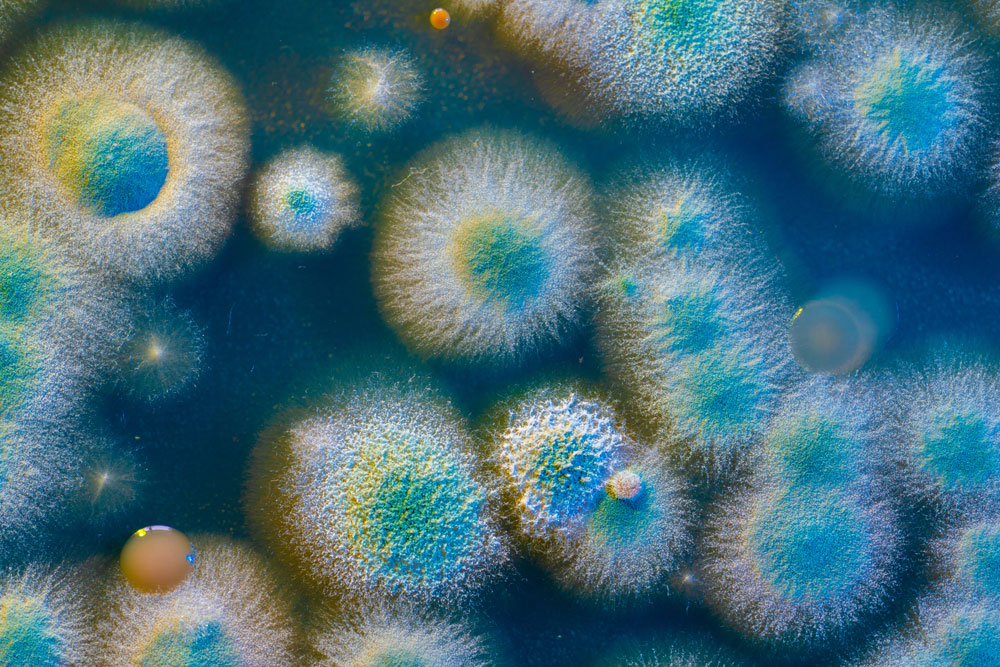What Causes White Fluffy Mould On Interior Walls?
 CONTENTS
CONTENTS
- What is white mould?
- What causes white mould?
- What is the difference between white mould and efflorescence?
- Is white mould dangerous?
- How to remove white mould
- Get in touch
Most people assume the mould that grows in homes is always dark brown, green, or black. This means they may miss the early signs of white, fluffy mould growth in their properties, allowing it to fester and spread.
If you have spotted mould growth in your home, our mould removal services can help. Our technicians are mould removal specialists that can eliminate all the mould in your home, including mould in the air. We operate nationwide, 24/7, 365 days a year, including bank holidays.
Keep reading to find out more about the white fluffy mould on your walls and how to get rid of it.
What is white mould?
Mould, a type of fungus, thrives in damp environments and can appear on various surfaces within your home. White mould is a common type of fungus that tends to appear as fluffy or powdery patches. The white colour usually typically indicates an early stage of growth or a specific species.
The whiteness you see may result from mycelium which are the thread-like structures that make up the body of the fungus. These fine filaments spread out like a web as they digest and grow on materials such as wood, drywall, or fabric. There are many different types of white mould that could be growing in your home:
- Aspergillus
- Penicillium
- Cladosporium
What causes white mould?
Mould spores are always floating in the air until they land on surfaces where there is excess moisture, warmth, organic material as a food source for the mould, and oxygen.
High humidity is the most common cause of mould as it causes condensation to form on surfaces, making them damp. Poor ventilation traps humid air, allowing it to build up. Moisture problems like rising and penetrating damp can cause mould, as well.
Certain materials are particularly susceptible to mould growth. Porous surfaces such as wood and drywall invite mould in by absorbing water easily. The mould can also grow deep in the pores, evading DIY mould treatments, and continuing to grow and spread.
Fabrics are vulnerable to white mould, too, if they get put away before they are fully dried out or are stored in damp, mouldy closets.
One of the most common places to find fluffy white mould is on walls. This is because they are made of hospitable materials like plasterboard or timber framing, and condensation often forms on walls due to their cool temperature.
What is the difference between white mould and efflorescence?
Spotting a white, chalky substance on your walls can be alarming. You might immediately think it's white mould, but often what you are seeing could be efflorescence. Telling them apart is crucial for proper treatment.
Efflorescence appears as a crystalline deposit of salts that can emerge from within stone or brick walls when water evaporates on the surface.
This salty residue typically does not pose health risks but indicates moisture issues that need addressing to prevent structural damage. If you are unsure whether those white marks are salt deposits, simply spritz some water onto them and see if they dissolve.
Mould growth, on the other hand, looks fuzzy or slimy rather than crystalline. Mould also tends to emit a damp, earthy smell as it releases microbial volatile organic compounds (mVOCs). Unlike efflorescence which wipes away cleanly leaving no stain behind, trying to wipe off mould will smear its colony across the surface.
Is white mould dangerous?
Mould in your home is more than an unsightly nuisance - it can pose health risks, too. Mould releases allergens and irritants which can put you at risk of a number of health problems including allergic reactions, respiratory infections, and asthma attacks.
Some kinds of mould release mycotoxins - toxic compounds associated with serious health issues, like fatal asthma attacks and sick building syndrome. Although most people assume only black mould can be toxic, even non-toxic kinds should be removed immediately to protect people's health. People with respiratory conditions and a weakened immune system, and elderly people and young children are particularly vulnerable to mould exposure.
How to remove white mould
If you spot white, fluffy mould on your walls, it's tempting to grab a cloth and some bleach, and start scrubbing. But these home remedies often cause more harm than good. Mould spores can spread easily and aggravating the mould may release them into the air, allowing them to move to other parts of your home. Without the right protective gear, you could inhale them, as well.
DIY methods like using bleach and vinegar may only kill surface mould, too, and will not penetrate deep enough into porous surfaces to eliminate all of it so it will grow back soon after treatment.
To properly address a mould problem, you should always bring in mould removal professionals. They have the specialist tools and training to safely remove the infestation while protecting your health. They will also be able to diagnose the root cause of the mould in your home and advise on how to prevent it from returning in the future.
Get in touch
Our nine-stage mould remediation process can eliminate all the mould in your property, including mould in the air. In an emergency, our technicians can be on site within several hours.
Contact our team today to get a free site survey and no-obligation quote for our mould cleaning services.

Speak with me today,
I’m here to help
By asking you a few questions either via phone or email I can immediately provide a realistic estimation of the cost.
You’re in good company. We’ve cleaned for the following commercial clients… View all

Why choose us?
- Cater to a wide variety of cleaning situations
- Nationwide coverage, available 24/7
- Cater to commercial and domestic clients
- Free survey provided prior to quotation
- Emergency response team
- Offer a bespoke service designed to suit all your needs
- All technicians hold professional health and safety qualifications, including BICSc, IOSH, Dewpoint Professional & Safe Contractor
We’re fully accredited
We place best practise, professional expertise and health and safety at the core of our business. We’re fully compliant with all legal obligations. You can view a list of our accreditations below, or visit our Health & Safety page for more information.











-RGB-small.1707319151.jpg)




















